Em junho de 2007, Niterói (RJ) recebeu a visita de uma delegação da Cidade de Annapolis, capital do estado de Maryland, nos EUA. A visita foi promovida pela organização Companheiros das Americas (Partners of the Americas), que promove a cooperação e a integração de esforços entre os dois estados: Rio de Janeiro e Maryland (através desta organização, outros estados têm outros estados parceiros nos EUA).
- Qual o objetivo da visita? Formalizar o convênio que fez de Niterói a cidade-irmã de Annapolis.
- Por que Annapolis? Annapolis é uma cidade que tem na atividade náutica uma de suas mais fortes marcas e alavancas da sua economia, além de sediar a Naval Academy, correspondente à Escola Naval (no Rio de Janeiro), a instituição que forma os oficiais da Marinha dos EUA. Annapolis possui oito iate clubes e recebe anualmente o Annapolis Boat Shows, considerada uma das maiores feiras náuticas do mundo. Por esses motivos, a cidade foi premiada com o título de Capital da Vela nos EUA (National Sailing Capital). Ao ostentar este título, Annapolis passou a ter o direito de ser a sede do Sailing Hall of Fame, em fase de implantação, e que tornará a cidade uma referência da vela americana e mundial.
- E Niterói com isso? Niterói tem toda a legitimidade para pleitear o mesmo que Annapolis alcançou e ser reconhecida como a Capital Brasileira da Vela ou a Cidade da Vela. A cidade foi pioneira na vela brasileira, detém o maior número de medalhas olímpicas na vela e tem um calendário anual de competições com regatas quase todos os finais de semana.
- Niterói + Annapolis? Annapolis orgulha-se da sua tradição náutica e faz disto uma identidade e uma oportunidade de desenvolvimento para a cidade. Após contatos realizados pelos Companheiros das Americas, a prefeitura de Annapolis concordou em apoiar Niterói a alcançar os mesmos resultados econômicos e reforçar o pleito niteroiense para ser reconhecido como a referência náutica do país. Uma delegação oficial de Annapolis veio a Niterói, o convênio foi assinado e os irmãos americanos abriram as portas para Niterói: ofereceram cooperação para implantar políticas públicas que valorizem a náutica e promovam a imagem e a economia da cidade, empresas de Annapolis interessaram-se em investir na cidade e outras oportunidades.
- O que aconteceu de 2007 para cá? Nada. O lado de lá espera até hoje que Niterói diga o que quer da parceria. Mais uma vez, Niterói age com letargia e perde oportunidades.
Axel Grael
---------------------------------
Annapolis Has a New Sister
She’s Brazilian, and she thinks life is a beach
by Steve Carr
Imagine Baltimore — and then some — smack on the Annapolis side of the Bay Bridge, and you would have Rio de Janeiro. Add about three more miles to the Bay Bridge. Then drop a city of 500,000 on polluted and dying bay with Atlantic beaches right where Kent Island begins on the Eastern shore. The bay is Guanabara Bay and the city is Niteroi.
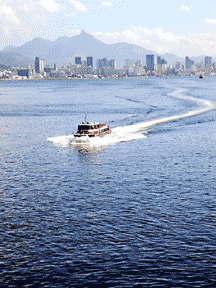 |
Lesson One: Never Laugh at Your Sister
Marylanders first visited their sister state in November 1964. Soon after, the first fluminenses (those who live by the river; the people of Rio) went to Maryland to begin the initial exchanges.
Maryland and Rio began their sisterhood with a high school student exchange program that over a span of 10 years involved 450 kids, 300 going north and 150 going south. For seven weeks, students lived with a family while attending school with their host brother or sister. The exchange program ended in 1975, but those students went on to become the mayor and chief of education of Niteroi and the state secretary for health under-secretary for the environment.
The Rio/Maryland partnership built the Escola Companheiros de Maryland, a nine-classroom school with 1,100 students, with small contributions from Glen Burnie, Edmonson and Canton high schoolers.
Rio artists showed their work in Baltimore. The University of Maryland signed several cooperative agreements with the major universities in Rio. And by 1985, IBM/Brazil funded a disabilities program, bringing Brazilian experts here to visit institutions and organizations involved with the handicapped. They modeled their programs after the Melwood Training Center in Upper Marlboro.
Since 1990, the partnership has focused its energies on environmental projects.
The University of Maryland College of Life Sciences and the College of Agriculture supported several projects at Rio universities involved with the Save the Bay efforts. As a result, Rio and Maryland established a unique student exchange project called the Ecosystem Study Project.
In December, 1996, a cooperative agreement was signed between the zoos of Rio de Janeiro and Baltimore. New environmental organizations in Rio were born, including the Instituto Baia de Guanabara, which has modeled itself after the Chesapeake Bay Foundation.
Now both sisters are seeking an Agreement for Environmental Cooperation. That’s where I came in.
I was there when the sister cities agreement was signed last month.
My personal mission was to find a local environmentalist. When I found the right person, I wanted to share Mayor Ellen Moyer’s Environmental White Paper, a book-sized document describing and illustrating the city’s every environmental action, like the rain gardens at the Navy Stadium.
Our host in Niteroi was a legendary fellow named Axel Grael. Axel just happens to be the deputy director of FEEMA, the federal environmental regulatory agency for the nation of Brazil, their equivalent of our Environmental Protection Agency. I had found my connection.
Along the way, I learned plenty of reasons to appreciate our connection with this sister city and state.
Lesson Two: Have a Good Time
Take every culture on the green globe and then mix them all together over the course of several generations. Then add flip flops (the national shoe) and minimal clothing, and you end up with these friendly, forever smiling, coffee-colored folks who often take your breath away. Brazilians are the most gorgeous people in the world.
Their country is a jungle with beaches. Everyone goes to the beach.
I jogged a couple miles each morning. My path took me up to the Contemporary Art Museum, a giant white flying saucer with dark panel windows, elevated upon a large white post, sitting atop a red sandstone bluff, overlooking downtown Niteroi. I’d jog back along the beach and watch a scene out of exercise world: volleyball, handball, football, soccer, foot-volleyball. At the edge of the beach, old men played canasta on concrete tables covered in green tablecloths as they jived with one another and passers-by. An army of sanitation workers in orange jumpsuits cleaned the beaches and streets with tireless energy.
Under grass-roof cabanas, vendors sold fresh coconut milk. They’d chop the coconut with a machete and give it to you with a straw for two real, which is one dollar, making it an easy exchange rate to keep in your head.
Brazil knocked me in the sand. It’s big-wave wonderful beaches; wild monkeys and pigs; frigate birds and toucans; sweet tasty beer and sugar cane-loaded caipirinhas; kids hand-slapping samba boogie beats in the pulsating jungle parks that pop up all over Rio; the melt-in-your-mouth meats; mosaic sidewalks of black and white tile; granite islands rising from the sea like forest-covered gods, wearing cloud hats; and the refreshingly civilized notion of Brazilian Time, where relativity rules.
Lesson Three: No Place is Paradise
Guanabara Bay is dying even faster than the Chesapeake. They’ve got fishermen out of work, closed beaches, contaminated fish, algal blooms, dead zones and stormwater pollutants that astounded even me.
Almost everyone smokes — everywhere: inside government buildings, airports, wherever you might be. But cigarette packs have these chilling pictures on the back of a smiling fellow with rotten gums and teeth.
The rich live in splendor along the water while the poor, who comprise almost a third of the population, live in squalor directly above the city in colorful shanties that combine little cities of their own, known as favelas, with their own drug-government gangs, and no sewerage, electricity or water.
We walked down steep steps toward the water, through the ruins of an old hotel that clung to the side of a steep granite cliff, like the flowering bromeliads that drape themselves over the tops of almost every large tree.
Their motto: Nautical Bearing — Learning the Way.
In its 10th year, the Grael Project has about two-dozen paid employees, lots of volunteers and a $500,000 budget supported by a wide range of government and outside sources. Most of the boats are donated.
Every year, the Project takes on 500 kids between the ages of nine and 25 from the favelas. They have a drop-out rate of 25 percent. The kids — who wear the blue and yellow T-shirt that is the standard uniform — come three days a week before or after school.
“Most of our kids don’t read,” said Axel, starting his tour in the small, cluttered library, filled mostly with books about sailing. “They can read, but they don’t read books.”
We climbed down a winding staircase and into an open area where volunteers and students worked on a homemade system of channels and drainpipes so they could use rainwater from the cistern on the roof to clean the boats all the way down at the bottom of the hill. Everywhere we looked, small groups of workers were plastering walls, repairing walkways and fixing up the rundown old place.
Inside the sail loft, three old machines service the sails and the kids learn to sew.
“It’s all about opening windows and showing these kids other possibilities,” said Axel. In the beginning, he said, “most people around town were very critical of the Grael Project. They said we were giving the kids false hope. Now they love us.”
Axel held up a blue canvass bag with the Grael Project logo. “The mothers of some of the kids come in here and sew these bags and purses. They sell them through support from SEBRAE, a government agency that partners with small businesses.”
In a large, airy, but dilapidated room, a woman sat with a boy of about 10.
“I saw her with a young girl when we first came in,” I said. “What’s her job here?”
“These kids have lots of serious life-and-death problems at home,” Axel said. “So we have a full-time clinical psychologist on staff to help the kids deal with whatever’s closing in on them. We also have a dental clinic, because these kids never get to see a dentist.”
In the machine shop, engines large and small sat ready for the kids. A boy of 13, with long straight hair, bare feet and a big smile, hefted a three horsepower Evinrude onto his shoulder and vanished through the far doorway. Following the engine, I watched this boy and seven other kids in their early teens take it apart under a grass cabana at the water’s edge and work to get it running, with a little encouragement from an instructor. Later, I noticed this same engine on one of the inflatables used to ferry the children back and forth from the larger sailboats.
The Grael Project also teaches woodworking, cartography, meteorology, geography, music and how to fix refrigeration units. The younger kids learn boat design by building toy models. To graduate, the older boys and girls must build a life-size model they can actually sail, very much as in our Build-a-Boat contest at Annapolis Yacht Club each spring.
Turns out that sailing isn’t just a sport for snotty, rich folks; it’s good for teaching kids real skills and a whole lot more.
“We put kids from rival gangs together in the same boat, where they have to learn teamwork,” Axel said as he picked up a colored chunk of map that one of the kids had made out of plaster during a mapping course.
Working together. What a concept.
Lesson Five: If They Can Do It, We Can Do It
For sister city exchange programs to work, they have to be a two-way street. Both sides need to get something. The benevolent-American mentality won’t get you very far in a country that cut the oil cord and does its best to discourage franchises. They demand respect, and they have a lot to offer us.
A project like the Grael could work in Annapolis, where Box of Rain has already made a start. We could take a hundred children each year from the public housing communities around Annapolis and use sailing and rowing to expand their horizons. Teach them skills. Help to find them work. Care about them as people. If they can do it in Niteroi, we can do it here in Annapolis.
From our sister city, I learned a neat and efficient way to save power. The room keys in hotels have a block of wood attached to the key ring. When you enter your room, you slide the wood block into a wall sleeve and power to the room goes on. The electricity goes off when you leave with your key.
Niteroi has traffic and parking problems, just like us. Getting back and forth to Rio on their bay bridge is a commuter’s nightmare. Car smog threatens the air. So the Brazilians burn ethanol, made from sugar cane, not corn, and they offer about six different grades at each gas station. It costs the same as we pay for oil.
But most people have shed the automobile for public transportation. They walk to the bus stop or the ferry terminal. They have buses of every size and shape, for the rich and the poor, and many run on natural gas. I have never seen so many buses as I saw in Brazil. It’s a way of life. If you don’t like buses, they have more cabs than New York City. Some enterprising folk run private van services, loading passengers in like cattle.
They are happy to share their successes with us, to teach us some important lessons. The biggest one is that the salvation of the Chesapeake will happen one harbor, one stream, one creek, one river, one town at a time. Bottom up, not top down.
The day we went down to City Hall to sign the Sister Cities agreement with the mayor and department directors was a scene made for a movie. We walked into the main lobby, which was bustling. There was a wall-sized poster of the Christ the Redeemer statue that is the signature icon of the area; like Thomas Point Lighthouse is to us, only bigger. The poster cried out in huge letters, VOTE NO CHRISTO.
“Why are they against Christ?” I asked.
Ron Hees, a retired businessman who taught me how patience and grace can move mountains, chuckled, “That says Vote Now for Christ. We are encouraging everyone to vote for Christ the Redeemer as the Eighth Wonder of the World.”
They go by first names in Brazil, so the mayor is called Pinto. The president is known as Lula. Titles and last names are irrelevant. Mayor Pinto was a handsome fellow with thick white hair, silver beard and an engaging smile. He greeted us with an army of staff, including reporters from three papers and camera people snapping away like we were signing an agreement to go into space. It was heart warming, even for a fairly cynical fellow like myself.
Alderman Sam Shropshire — one of the Annapolis party — had the best line of the day: “This is my first time south of the Equator,” he said. “It has always been my dream to see the Southern Cross. Axel Grael showed me the Southern Cross last night at a barbecue at his yacht club. I hope that you will one day travel to Annapolis, where I will show you the Big Dipper.”
Lesson Seven: I Haven’t Seen Everything Yet
Editor’s Note: This week, Rio’s Christo was voted one of the New Seven Wonders of the World in an online poll garnering some 100 million votes.
Fonte: Bay Weekly
Leia mais:
Niterói Capital da Vela
Niterói quer ser reconhecida como a Capital da Vela
Vereadores vão conhecer o projeto de fazer de Niterói a capital da vela.
Parceria dos Clubes abraça Niterói Capital da Vela.










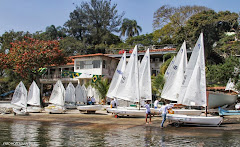



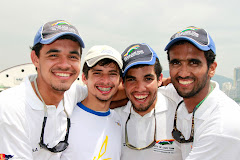

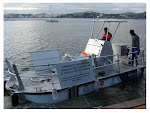
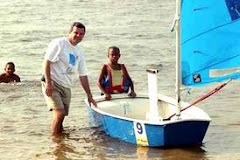
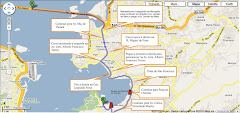
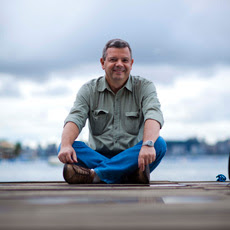

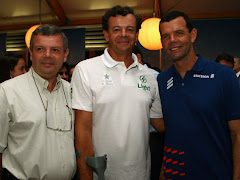



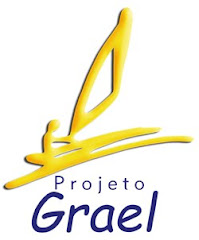
Eu gostaria de participar deste projeto.
ResponderExcluirEdson de Faria Almeida - Engenheiro Florestal
D.Sc. Engenharia Civil - COPPE-UFRJ
"Sensibilidade Ambiental a Derramamento de Óleo dos Ecossistemas Costeiros da Região do Cabo Norte - Amapá: A Contribuição do sensoriamento Remoto"